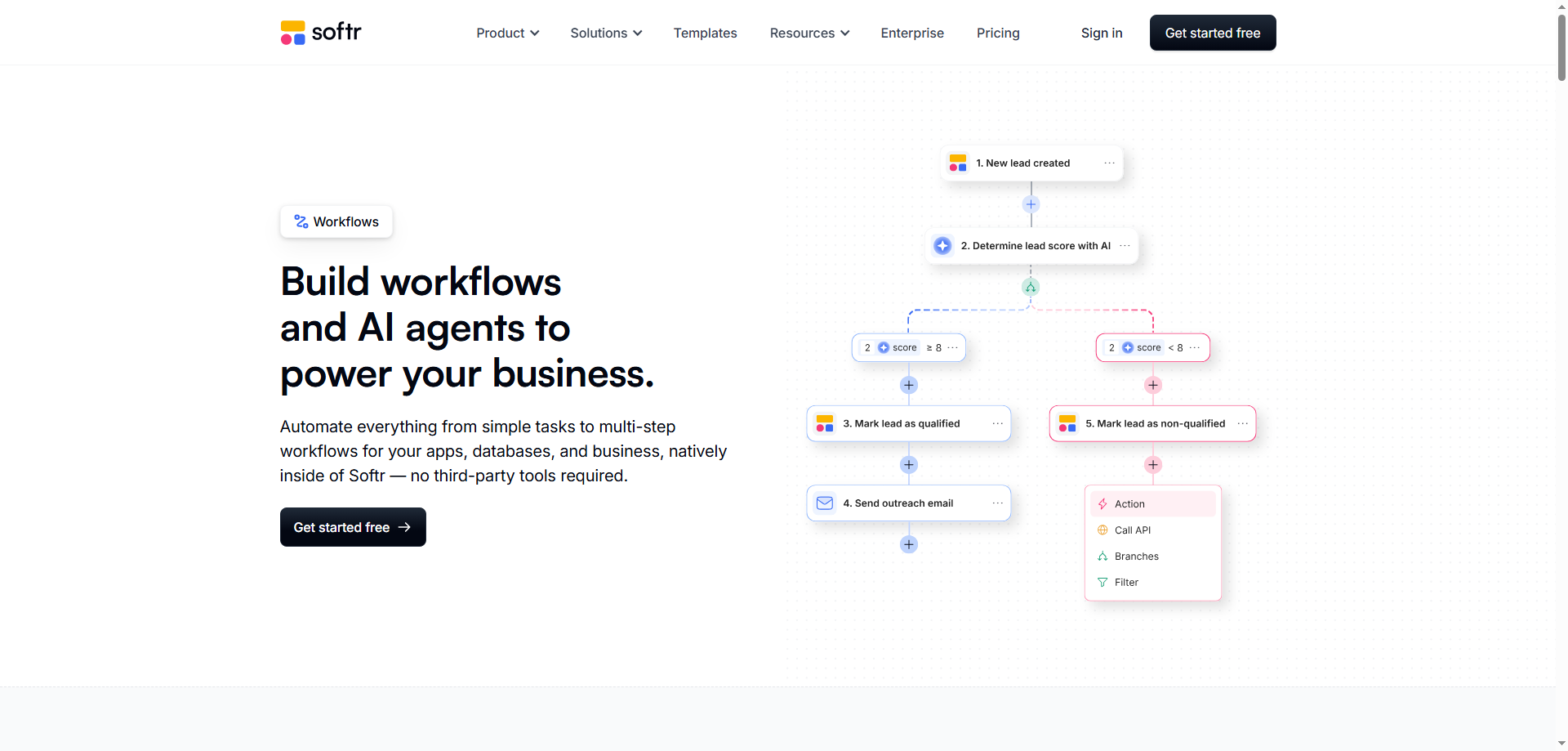1) Creative Angle: how I turn ideas into living flows
Softr Workflows makes me feel like a builder-director. I take a messy process and storyboard it into no-code automation: a trigger, an action, some logic, and—when it helps—an AI assistant on top. I can start from a template or ask the AI Co-builder to sketch the flow, then tweak it like Lego.
Here’s my typical scene:
- Trigger: “New user signs up” or “Order status changes.”
- Logic: check plan tier, geography, or last activity for user management.
- Actions: send a welcome email, update CRM, write to a data store for data automation, and notify support.
- AI moment: the assistant drafts a helpful reply or a personalized tip.
Because this is a low-code tool, I can embed these flows inside my Softr app, turning static pages into dynamic experiences. It’s creative, but practical: business process optimization without hand-coded scripts. I use it for marketing automation nudges, customer support automation replies, and tiny “quality of life” touches that make my app development feel premium.
2) Disruptive Angle: can it replace what I already use?
Short answer: it won’t replace my entire stack, but it compresses a lot of glue work. Instead of juggling a generic automation app, a separate AI helper, and ad-hoc scripts, I orchestrate everything where my Softr app actually lives.
What it can realistically replace for me:
- Lightweight iPaaS-style zaps for data automation between my app, email, and CRM.
- Basic marketing automation (welcome, onboarding, win-back, lead assignment).
- First-line customer support automation via AI replies and guided flows.
What it won’t fully replace:
- Deep analytics/BI or heavy-duty data warehousing.
- Enterprise CRM/IT automations that require complex governance.
Net-net: if your product already runs on Softr, this is the no-code automation layer that keeps context close to users. For external systems only, it still helps—but its superpower is coupling workflows with in-app user management and AI assistant moments.
3) Exact-Need Angle: will people actually adopt it?
I think adoption is strong where the pain is obvious: founders, ops leads, and support managers trying to scale without hiring engineers. The visual builder + templates + AI Co-builder hits three jobs to be done: move faster, reduce errors, and keep UX consistent.
Who leans in first:
- Indie makers & SMBs who want business process optimization without dev cycles.
- Growth & success teams craving reliable marketing automation and lifecycle nudges.
- Support teams who need on-brand, first-response AI assistant replies baked into the app.
Time-to-value is real: I can launch “new signup → segmented welcome → CRM sync → task to rep” in minutes, not days. Social proof doesn’t hurt either—Softr’s Workflows is already resonating (Product Hunt: 303 votes, 43 discussions), which mirrors what I see in maker communities: people want automation where their product lives.
4) 12-Month Survival Score: 4.3 / 5 stars
Verdict: Great odds Softr Workflows thrives this year. It sits at the intersection of no-code automation, low-code tool flexibility, and practical AI assistant use—exactly where teams are cutting manual work.
Opportunities
- Deeper integrations: richer CRM, billing, and data sync to expand data automation use cases.
- Template libraries: opinionated playbooks for onboarding, renewals, and customer support automation.
- In-app analytics: tie workflow events to revenue and retention for sharper business process optimization.
- Governance features: roles, approvals, and versioning to win larger teams.
Risks
- Edge-case complexity: very custom flows may still need code or external services.
- Rate limits & reliability: heavy workloads demand strong queuing and retries.
- Vendor overlap: existing iPaaS/CRM automations might feel “good enough.”
- Change management: non-technical teams need clear guidance to avoid messy logic sprawl.
What would lift it to 4.6–4.8? Granular permissions, environment/version control, advanced testing/simulation, and deeper observability (run history, alerts, SLAs). Add those, and Softr Workflows becomes a default choice for app development teams that want speed plus control.
Why I’m betting on it
I want automation that lives close to my users. Softr Workflows gives me no-code automation inside my app, a friendly low-code tool feel, and an AI assistant to humanize touchpoints. For my mix of user management, marketing automation, and customer support automation, it’s the right balance of power and simplicity.









